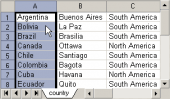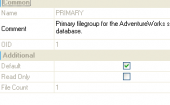MS SQL Maestro online Help
| Prev | Return to chapter overview | Next |
CLR Procedure Editor
CLR procedures can be edited within CLR Procedure Editor. In order to run the editor you should either
| • | select the CLR procedure for editing in the explorer tree (type the first letters of the CLR procedure name for quick search); |
| • | select the Edit CLR Procedure ... item from the popup menu |
or
| • | open the schema in Schema Editor and the CLR Procedures tab there; |
| • | select the CLR procedure to edit; |
| • | press the Enter key or select the Edit CLR Procedure item from the popup menu (alternatively, you may use the corresponding link of the Navigation Bar). |
You can change the name of the CLR procedure using the Rename CLR Procedure dialog. To open the dialog you should either
| • | select the CLR procedure to rename in the explorer tree; |
| • | select the Rename CLR Procedure item from the popup menu |
or
| • | open the schema in Schema Editor and the CLR Procedures tab there; |
| • | select the CLR procedure to rename; |
| • | select the Rename CLR Procedure item from the popup menu (alternatively, you may use the corresponding link of the Navigation Bar). |
The basic principles of Object Editors in MS SQL Maestro are explained in a separate topic. Below you will find a description of editor tabs that are unique for the current object.
See also: Create CLR Procedure Wizard
| Prev | Return to chapter overview | Next |





 Download
Download Buy
Buy
